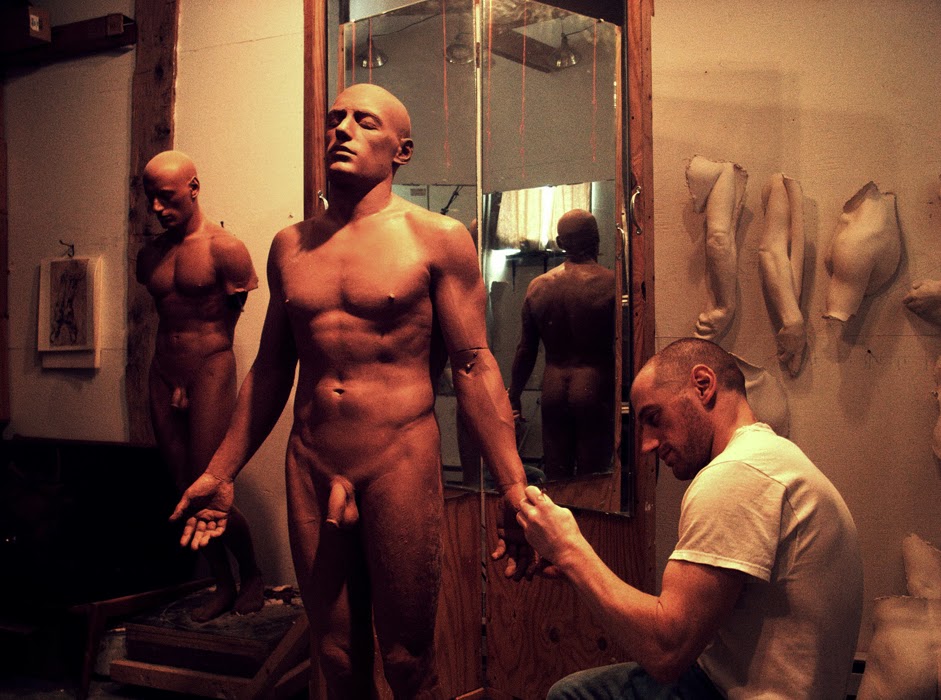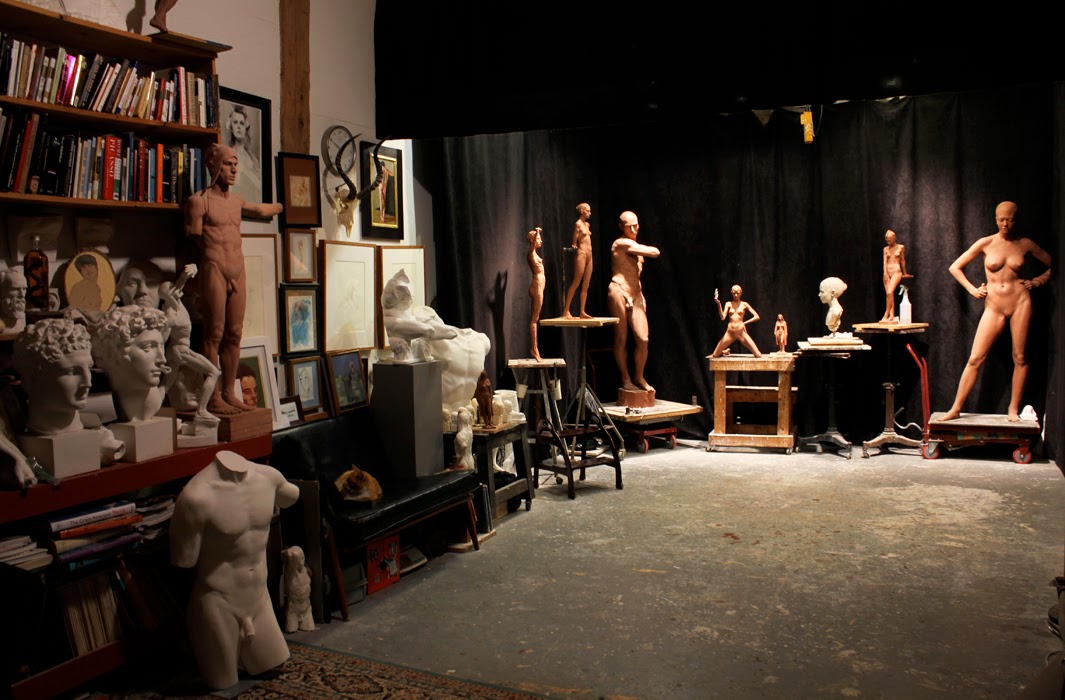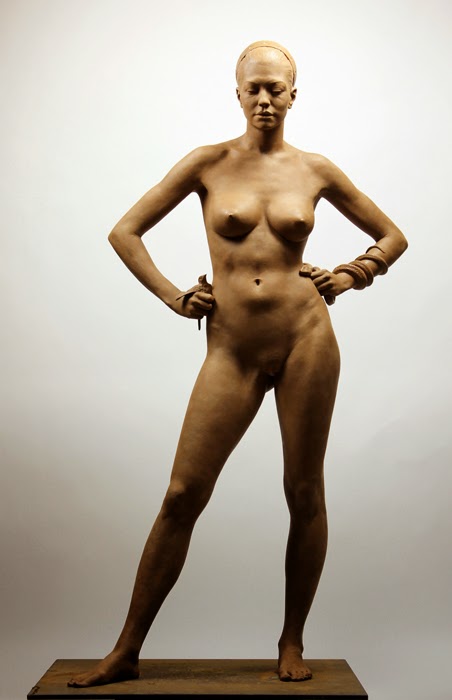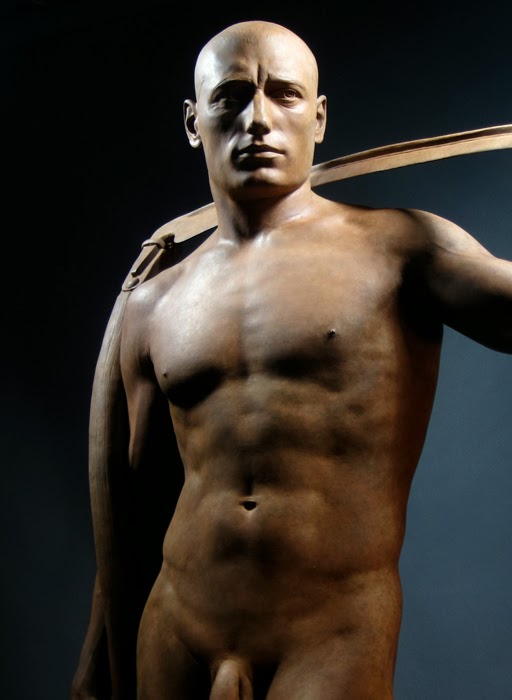
by Poppy Field I digiQualia.com
Amongst figurative sculptors Brian BoothCraig is a household name.
Every aspiring sculptor at The Florence Academy of Art knows of Brian’s work yet few have actually met him. And, although his website lists an impressive array of exhibitions, projects, teaching posts and literature, very little is known about him. Until now…
In this blog, Brian unveils: the defining moments of his career and a rare a glimpse of his working method. He offers advice to aspiring artists and ponders over the question: “If I were not a sculptor, what would I be?”. Want to know the answer? Then read on to find out more about Brian Booth Craig.
In this blog, Brian unveils: the defining moments of his career and a rare a glimpse of his working method. He offers advice to aspiring artists and ponders over the question: “If I were not a sculptor, what would I be?”. Want to know the answer? Then read on to find out more about Brian Booth Craig.
In a January blog post, I wrote about the World Wide Web and the opportunities it has created for artists. Brian is a living, breathing example of online success. How did we in Florence first become aware of his work? Facebook. So here it is, straight from the Horse’s Mouth:
Surprsingly, Brian hasn’t always wanted to be
a sculptor: “The decision to be a
sculptor came somewhat late for me. Up until my early twenties I primarily
studied drawing and painting. However, I found that I had an affinity and
facility for sculpting at University, so I entered the sculpture department.
The training was mostly conceptual and technical, with no consideration for the
figure.”
After this Brian spent one year training in
anatomy and modeling clay at the New York Academy of Art. Though that was the
extent of his formal training, Brian has never stopped learning. “Intense observation of nature has been my
primary teacher, followed by a close study of past masters and contemporary
sculptors.”
One such contemporary is the pioneer of
photorealism, Audrey Flack. Brian reflects that time spent working as an
assistant to Audrey and other artists was exceptionally valuable. “It teaches one how to run a studio, how to
deal with clients and the pitfalls of making public art. The experience exposed
me to the dilemmas artists face when creating public artwork, and it has helped
me define the work I want to make.”
Today, Brian describes his work as a
synthesis of many approaches. Rather, than conform to a singular or linear
method, the configurations of these are adapted to each sculpture.
“I work from
life, imagination, photographs, casts, anatomical knowledge, historical
antecedents and the work of my peers. My working method requires a good memory
of form, but I have closely observed human form for many years, so my
imagination plays a role at every stage of sculpting. I have a mental catalogue
of human forms that is informed by nature, anatomy and sculptural conventions,
and which permits me to visualize possibilities and variations as I am
working.”
Brian strives to make every sculpture
‘his’. Having studied the fundamentals of foundry techniques at
University, he is able to apply this knowledge in his own studio. “I like having control over the process of
finishing a bronze, and connecting the creative decisions to the production
process. I try to be as engaged as possible through the making of each bronze
so that my hand is truly in every piece. I am not sure if this means anything
to collectors, but it matters greatly to me.”
However, bronze casting is a lengthy process.
In order to create more work, Brian hopes to one day implement his plan of
supervising studio assistants during the bronze production.
Brian also dreams of creating a large
sculptural fountain in an urban setting.
“The marriage of sculpture and architecture has mostly dissolved, and the
divorce of the two calls for a reconciliation. Public work that intelligently
and creatively merges the two art forms would be very attractive to me.”
Personally, I believe Brian will achieve
these goals and much, much more. In growing as an artist he has made
innumerable sacrifices, especially with his time. “I have limited my social life and I make great investments of time and
money for my work. It is a challenge, but I see no other way to sustain a
creative life without a willingness to make sacrifices.”
Brian’s dedication to his work is
unquestionable. So, I was not surprised that his advice to aspiring young
artists was to work very hard: “Be
prepared to make sacrifices. If you are more interested in partying and playing
the role of artist than going into the studio, then you probably are not going
to be able to sustain a creative life”.
He also recommends finding employment that is
in someway connected to the art world: artist assistant, art handler, gallery
assistant, teaching, etc. “Try to be
connected to the lives of other creative people. Be willing to help your peers.
Don't just be a taker, but assist your colleagues.” Wise advice
indeed and something I, along with many of my contemporaries, am trying to do.
Finally, Brian stresses it is absolutely
essential to “ feed the creative urge
every day, even if it is just thinking about one's work, discussing it with
someone, or preparing your materials for the next free day in the studio.”
For those of us keen to learn, it is indeed fortunate that Brian considers himself a sculptor who teaches:
“Because my
identity is artist first, it is necessary for me to be entirely open and giving
to my students when discussing my own experiences, otherwise my contribution
will be limited to classroom methodologies and techniques”. He
enjoys his interaction with students and believes that it is his responsibility
to pass on his knowledge “beyond simply
teaching a formula for making objects”. His goal is to cultivate
individual visual thinking: “I love it
when a student surprises me with their solutions, and makes something I would
never conceive.”
In fact, Brian considers that artist-teacher
roles are mutually beneficial: “Teaching
forces me to articulate and analyze processes and concepts that become habitual
and non-verbal. This recapitulation keeps me from becoming stale or thoughtless,
making me question my own routines.”
So, what would Brian like to be if he were not a sculptor? “Unemployed!” Well, I can’t see that ever happening … can you?
Brian may be across the Atlantic Ocean
teaching those oh so lucky students at the Lyme Academy College of Fine Arts in Connecticut
BUT his wise words are here to be shared in studios throughout the world.
“Social
media is a vital career tool for every contemporary artist, especially emerging
artists. The Internet has changed the way artists get exposure, and the
gatekeepers have yielded some of their power because of the democratizing
effects of social media. Emerging artists who do not employ these outlets are
at a big disadvantage. It connects artists to each other and to a larger
public. I have found it a wonderful tool for expanding my awareness of the art
world, and keeping myself engaged in conversations about contemporary art.”
With this in mind, I look forward to writing
about Bridgeman Art Studio - due to be launched next week!











Is there a contact for Poppy?
ReplyDeletepoppyfield@digiqualia.com
Delete